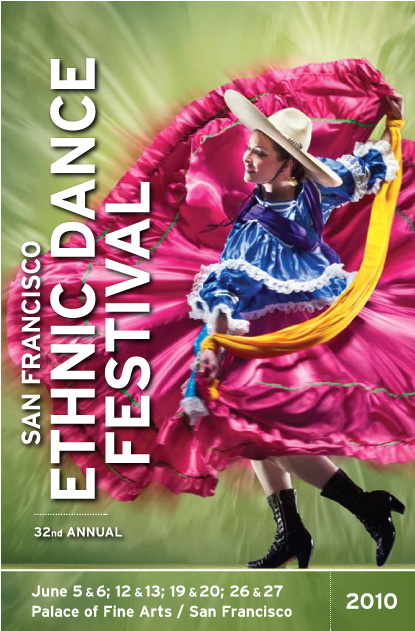Now in its 32nd year, the San Francisco Ethnic Dance Festival raises some fascinating questions about what constitutes “ethnic” dance. According to the festival’s executive director, Julie Mushet, the term “ethnicity” causes contention every year.
130 companies and soloists from northern california auditioned for 37 performance slots at this year’s festival, which runs till June 27, the largest number of applicants the festival has ever seen.
 The word “ethnic” is highly debated in the world of the San Francisco Ethnic Dance Festival, which runs this year until June 27. In 2010, 130 companies and soloists from northern California auditioned for 37 performance slots – the highest number that the festival has seen to date. (The festival’s executive director, Julie Mushet, attributes the growth to higher unemployment meaning that people have more free time to devote to their hobbies, a greater connection between people and their roots / native cultures, and the publication of a complimentary article about the festival by the New York Times’ chief dance critic, Alastair Macaulay last year, which helped to raise the profile of the festival.)
The word “ethnic” is highly debated in the world of the San Francisco Ethnic Dance Festival, which runs this year until June 27. In 2010, 130 companies and soloists from northern California auditioned for 37 performance slots – the highest number that the festival has seen to date. (The festival’s executive director, Julie Mushet, attributes the growth to higher unemployment meaning that people have more free time to devote to their hobbies, a greater connection between people and their roots / native cultures, and the publication of a complimentary article about the festival by the New York Times’ chief dance critic, Alastair Macaulay last year, which helped to raise the profile of the festival.)
There exists a lot of competition between companies for slots on the festival’s program and one of the major causes of contention is whether an ethnic dance festival should only feature dances that strictly reflect traditional dance steps, or whether fusion-style dances, which integrate steps from more than one dance form and often have a more contemporary feel, should be given equal (or any) place in the program. Both types of performances are currently reflected in the festival’s program.
“We’re seeing so many hybrid fusion elements in companies that come to audition for the festival,” said Mushet in a phone interview. “But the main question we ask, beyond looking at whether technique and presentation are good, is: ‘is the integrity of the main cultural dance form that the company seeks to promote through their performance being reflected and maintained? Beyond examining each audition candidate for its qualities as a dance, we always come back to idea that the dance shoud be appropriate to its cultural origin. In other words, is the movement distinctly connected to the ethnicity?”
Apparently, if a dance company simply appropriates an ethnicity in a superficial way by, say, wearing a costume or dancing to music from a particular part of the world, then the panel of eight judges (who all have backgrounds in different ethnic dance forms) can see right through it.
But the dancers, choreographers and judges involved with the festival are often at odds as to what really constitutes “ethnic” dance. Mushet said that the people who helped found the festival 32 years ago did so in reaction to the fact that only European forms like ballet were able to attract large audiences and media attention as well as performances in major venues. They wanted the globe’s myriad other dance forms to gain greater exposure. These founding people, according to Mushet, generally have a more purist mindset about the definition of ethnic dance and think that traditions should be honored.
But a younger generation of festival participants tends to think differently. “The younger generation would like to change the festival’s name to the ‘San Francisco World Dance Festival’ and include all dance forms,” said Mushet. “They consider ballet to be just another dance form of so many.” Interestingly, no ballet company has ever auditioned for the festival so far, Mushet said, which suggests that ballet companies do not regard themselves as being part of the “ethnic” dance community.
The issue of ethnicity is such a hot topic for the festival right now that World Arts West, the organization which produces the event each year, is hosting a town hall meeting with its constituents on July 24 to hash through the issues.
